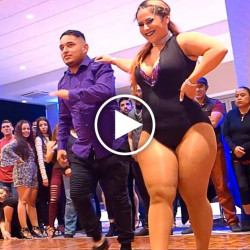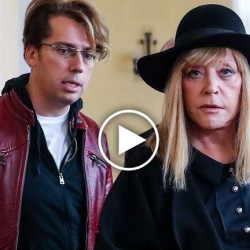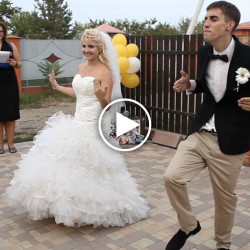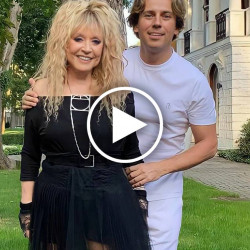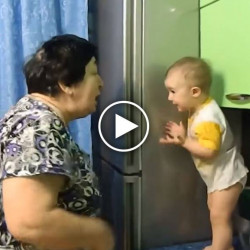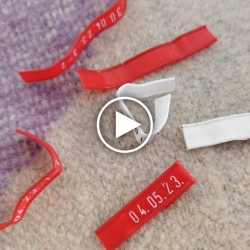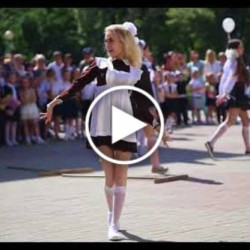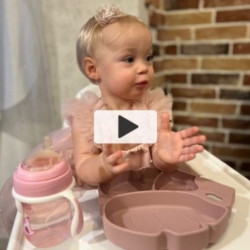Cash, cars, gold, and livestock: How Kyrgyzstan organized its largest crowdfunding campaign to help sick children
The nation is able to rally and mobilize resources in the face of adversity
Originally published on Global Voices
A volunteer in Osh, Kyrgyzstan, wearing a vest with the image of Hamza, a little boy diagnosed with Spinal Muscular Atrophy. Screenshot from the video “ХАМЗА / ОШ ШААРЫНДА АКЧА ЧОГУТУЛДУ” from adil tv‘s YouTube channel. Fair use.
For people in Kyrgyzstan, March 2025 was marked by the extraordinary joint effort to save children with Spinal Muscular Atrophy (SMA), a genetic disease that affects the central nervous system and can lead to muscle deterioration and even death if untreated. This rare genetic disease requires millions of dollars to treat. A single dose of the gene therapy drug called Zolgensma, which is enough to treat the disease, can cost up to USD 2 million.
In less than two weeks, the country came together and collected over KGS 510 million (USD 5.9 million), displaying unprecedented unity and generosity.
Here is a YouTube video where the organizers talk about the crowdfunding campaign.
These funds will be used to treat three little boys, Hamza, Aslan, and Bayhan, who are all diagnosed with SMA. Each needed KGS 170 million (USD 1.97 million) to purchase Zolgensma and undergo a gene therapy session, an astronomically high amount for average families in Kyrgyzstan.
In the absence of government support for such patients and a shortage of time, their families sought help from the public, marking the start of the largest and fastest crowdfunding campaign in Kyrgyzstan’s history.
It all started with donations for Hamza, whose parents started a crowdfunding campaign in November 2024 but failed to raise much money until March. On March 12, a group of popular bloggers started telling his story on their Instagram accounts and encouraging people to help save his life.
The most prominent of them were Atakul Zhalilov, a founder of the advertising agency called Tez Kabar, and Askarbek Saparbek uulu, a businessman working in the car import and sales industry.
In three days, over KGS 202 million (USD 2.3 million) was collected for Hamza. The extra amount was transferred to Aslan’s cause.
Here is an Instagram post with the announcement that the organizers had collected enough funds for Hamza.
On March 20, this amount grew to 420 KGS million (USD 4.9 million), which meant that enough money was raised for Aslan as well. The extra amount, KGS 80 million (USD 925,000), was then transferred to Bayhan’s crowdfunding campaign.
Here is an Instagram post featuring people celebrating after collecting enough money for Aslan.
On March 23, it was announced that enough money had been donated to Bayhan as well, capping off a historic achievement.
What made this possible was the effective work of volunteers, media exposure, and timing, which coincided with the holy month of Ramadan, a period associated with doing good deeds and giving alms.
However, a fundamental factor was the vibrant civil society institution, which is perhaps the strongest in Central Asia. Kyrgyzstani people’s extraordinary ability to band together and act as one in times of crisis and need is well documented and was on full display during the COVID-19 crisis in 2020 and the military conflict with Tajikistan in 2022.
The March 2025 crowdfunding campaign was another example of it. It united Kyrgyzstani people of all ages, religions, ethnicities, tribes, regions, and occupations. People didn't just give money, but also sheep, horses, cars, buses, jewelry, and whatever else could be sold to contribute to the cause.
Here is an Instagram post about the donation of a camel and two sheep.
Here is an Instagram post about the donation of a car.
The campaign’s effect has gone beyond its goal of saving three kids. It created a nationwide discussion on the availability of treatment for rare diseases and their prevention. The Ministry of Healthcare has already announced that the state's Fund for Children with Cancer will now be repurposed to provide help to children with rare diseases.
The campaign also underscored the lack of specialists and facilities available to detect and prevent genetic diseases and the need to raise awareness among parents to undergo genetic testing for family planning.
The hope is now that the government and civil society can work together and create a systematized donation system to help more children in need of immediate assistance.

